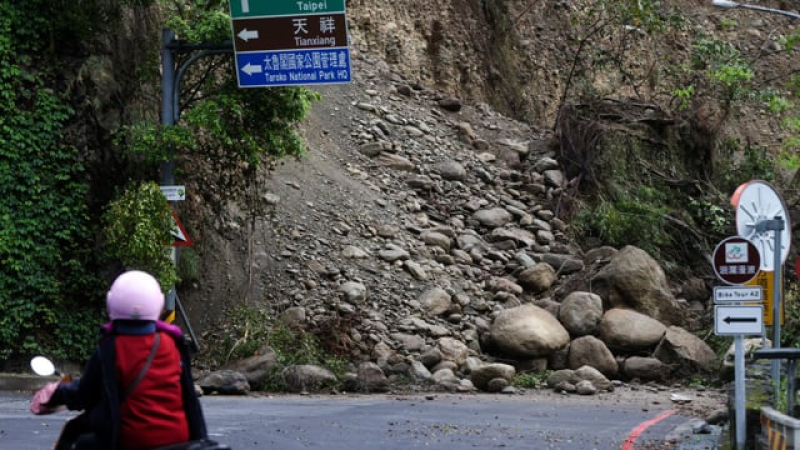- Tarique’s Flight Lands in Sylhet; Crowds Build at 300 Feet |
- Christmas in Bangladesh Thursday |
- Bangladesh Bars Internet Shutdowns, Restores BTRC Autonomy |
- Tarique Rahman Leaves London for Bangladesh After 17 Years |
- Govt welcomes Tarique Rahman’s return, assures full coop |
Taiwan hit by strongest quakes, reaching 6.3 magnitude

Taiwan's capital was hit by a series of earthquakes overnight into the early hours of Tuesday, with the Central Weather Administration saying the strongest was a magnitude-6.3 tremor originating in eastern Hualien.
The first strong quake -- a magnitude 5.5 -- hit on Monday at around 5:08 pm (0908 GMT), according to Central Weather Administration. It could be felt in the capital Taipei.
That was followed by a series of aftershocks and quakes, with two intense tremors hitting one after another around 2:30 am (1830 GMT) Tuesday, according to AFP reporters and witnesses in Taipei.
"I was washing my hands, and suddenly felt what I thought was vertigo," Olivier Bonifacio, a tourist staying in Taipei's Da'an district, told AFP.
"I stepped into my room and noticed the building was rocking and I heard the desk creak," he said, adding that it was then he realised it was another aftershock.
The Central Weather Administration said a magnitude-6.0 quake had hit at 2:26 am, followed six minutes later by the magnitude-6.3 tremor, reports BSS.
The US Geological Survey put the first one at a magnitude-6.1, followed by a magnitude-6.0.
Dozens more smaller tremors were recorded by the Central Weather Administration over the rest of the night, with a new one every few minutes, according to its website -- all in the Hualien region.
Through Monday, AFP reporters could feel their buildings swaying during intense quakes, while one said "glass panels of bathroom and windows were making noises" as the island shuddered.
The Hualien region was the epicentre of a magnitude-7.4 quake that hit on April 3, causing landslides that blocked off roads around the mountainous region, while buildings in the main Hualien city were badly damaged.
At least 17 were killed in that quake, with the latest body found in a quarry on April 13.
Early Tuesday, Hualien's fire department said that teams were dispatched to inspect any disaster from the new quakes.
At 2:54 am, they released a statement saying no casualties had been reported yet.
Taiwan sees frequent earthquakes as it is located at the junction of two tectonic plates.
The April 3 quake was followed by hundreds of aftershocks, which caused rockfalls around Hualien.
It was the most serious in Taiwan since 1999, when a magnitude-7.6 quake hit the island. The death toll then was far higher, with 2,400 people killed in the deadliest natural disaster in the island's history.
Stricter building regulations -- including enhanced seismic requirements in its building codes -- and widespread public disaster awareness appeared to have staved off a more serious catastrophe in the April 3 quake.

